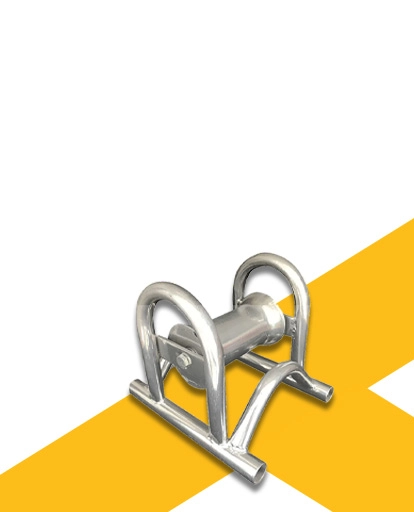
-
 Afrikaans
Afrikaans -
 Albanian
Albanian -
 Amharic
Amharic -
 Arabic
Arabic -
 Armenian
Armenian -
 Azerbaijani
Azerbaijani -
 Basque
Basque -
 Belarusian
Belarusian -
 Bengali
Bengali -
 Bosnian
Bosnian -
 Bulgarian
Bulgarian -
 Catalan
Catalan -
 Cebuano
Cebuano -
 Corsican
Corsican -
 Croatian
Croatian -
 Czech
Czech -
 Danish
Danish -
 Dutch
Dutch -
 English
English -
 Esperanto
Esperanto -
 Estonian
Estonian -
 Finnish
Finnish -
 French
French -
 Frisian
Frisian -
 Galician
Galician -
 Georgian
Georgian -
 German
German -
 Greek
Greek -
 Gujarati
Gujarati -
 Haitian Creole
Haitian Creole -
 hausa
hausa -
 hawaiian
hawaiian -
 Hebrew
Hebrew -
 Hindi
Hindi -
 Miao
Miao -
 Hungarian
Hungarian -
 Icelandic
Icelandic -
 igbo
igbo -
 Indonesian
Indonesian -
 irish
irish -
 Italian
Italian -
 Japanese
Japanese -
 Javanese
Javanese -
 Kannada
Kannada -
 kazakh
kazakh -
 Khmer
Khmer -
 Rwandese
Rwandese -
 Korean
Korean -
 Kurdish
Kurdish -
 Kyrgyz
Kyrgyz -
 Lao
Lao -
 Latin
Latin -
 Latvian
Latvian -
 Lithuanian
Lithuanian -
 Luxembourgish
Luxembourgish -
 Macedonian
Macedonian -
 Malgashi
Malgashi -
 Malay
Malay -
 Malayalam
Malayalam -
 Maltese
Maltese -
 Maori
Maori -
 Marathi
Marathi -
 Mongolian
Mongolian -
 Myanmar
Myanmar -
 Nepali
Nepali -
 Norwegian
Norwegian -
 Norwegian
Norwegian -
 Occitan
Occitan -
 Pashto
Pashto -
 Persian
Persian -
 Polish
Polish -
 Portuguese
Portuguese -
 Punjabi
Punjabi -
 Romanian
Romanian -
 Russian
Russian -
 Samoan
Samoan -
 Scottish Gaelic
Scottish Gaelic -
 Serbian
Serbian -
 Sesotho
Sesotho -
 Shona
Shona -
 Sindhi
Sindhi -
 Sinhala
Sinhala -
 Slovak
Slovak -
 Slovenian
Slovenian -
 Somali
Somali -
 Spanish
Spanish -
 Sundanese
Sundanese -
 Swahili
Swahili -
 Swedish
Swedish -
 Tagalog
Tagalog -
 Tajik
Tajik -
 Tamil
Tamil -
 Tatar
Tatar -
 Telugu
Telugu -
 Thai
Thai -
 Turkish
Turkish -
 Turkmen
Turkmen -
 Ukrainian
Ukrainian -
 Urdu
Urdu -
 Uighur
Uighur -
 Uzbek
Uzbek -
 Vietnamese
Vietnamese -
 Welsh
Welsh -
 Bantu
Bantu -
 Yiddish
Yiddish -
 Yoruba
Yoruba -
 Zulu
Zulu


Aug . 12, 2024 19:26 Back to list
Explore Competitive Pricing for 25 Ton D Shackle Options in the Market Today
Understanding the Price of D Shackle 25 Ton
When it comes to lifting and rigging equipment, the shackle is an essential component that ensures the safe handling of heavy loads. One specific type, the D shackle rated for 25 tons, has garnered attention in various industries, including construction, shipping, and manufacturing. This article delves into the factors affecting the price of the D shackle 25 ton and its significance in practical applications.
What is a D Shackle?
A D shackle, often referred to as a D-shackle, is a U-shaped fastening device with a pin that is used to connect various pieces of equipment in lifting operations. Its design allows for efficient load distribution and strength, being capable of withstanding significant pressure while ensuring safety during heavy lifts. The 25-ton rating indicates the maximum load the shackle can handle, making it suitable for substantial lifting tasks.
Factors Influencing Price
1. Material Quality The material used in the shackle significantly impacts its price. High-quality steel alloys that are resistant to corrosion and wear are typically more expensive than lower-grade materials. Some manufacturers may also offer different surface treatments to enhance durability, further affecting the overall cost.
2. Manufacturing Standards Shackles that comply with rigorous safety and performance standards, such as those established by ASTM, ISO, or other regulatory bodies, often carry a higher price tag. This compliance ensures reliability and safety, which is paramount when dealing with heavy loads.
d shackle 25 ton price

3. Brand Reputation Established brands that are recognized for their quality and safety standards may charge more due to their reputation. Customers often prefer to invest in trusted brands, as the potential risks associated with subpar equipment can lead to severe accidents and financial losses.
4. Market Demand The financial dynamics of supply and demand in the marketplace can also influence prices. In times of increased construction or shipping activity, the demand for rigging and lifting equipment often rises, leading to higher prices.
5. Volume and Purchasing Agreements Companies that purchase shackles in bulk or enter into long-term agreements with suppliers may benefit from lower unit prices due to economies of scale. Conversely, smaller orders might not have such price advantages, increasing the per-unit cost.
Importance of Investing in Quality Shackles
While it may be tempting to opt for the lowest-priced D shackles available, investing in quality equipment is critical for safety and efficiency. The potential costs associated with accidents, injuries, or damaged goods can far exceed the savings made from cheaper alternatives. Quality shackles ensure reliability in lifting operations, reducing the risk of equipment failure.
Conclusion
In summary, the price of a D shackle rated for 25 tons is influenced by various factors, including material quality, brand reputation, manufacturing standards, market demand, and purchasing volume. Understanding these elements can help businesses make informed decisions when selecting rigging equipment. Investing in high-quality shackles not only ensures compliance with safety standards but also contributes to the efficiency and success of lifting operations. Ultimately, prioritizing safety and reliability over mere cost considerations will lead to better outcomes in the long run.
Latest news
What Are Construction Tools and How Are They Used?
NewsJul.11,2025
Professional-Grade Duct Rodding Tools for Superior Cable Installation
NewsJul.11,2025
Enhancing Safety and Efficiency with Modern Hot Stick Solutions
NewsJul.11,2025
Empowering Cable Installation with Advanced Rodder Solutions
NewsJul.11,2025
Elevate Your Cable Installation Projects with Cable Pulling Tools
NewsJul.11,2025
Efficient Cable Handling Solutions: Cable Rollers for Sale
NewsJul.11,2025











